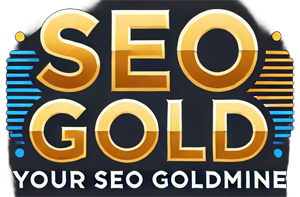SEO for Dummies: Essential SEO Basics Every Beginner Should Know
SEO For Beginners
It’s shocking, but most people still don’t know what SEO is. Some have never even heard of it, and of those who have, most don’t know what it stands for. Even fewer truly understand what it means or why it’s important.
At its core, I usually explain SEO as this: SEO is what I do to a website to make Google find it.
It sounds simple, but there’s a lot that goes into making a website visible to search engines like Google. Most people are unfamiliar with even the most basic aspects of how websites work, and that’s where SEO comes in.
The Two Pages of a Website
Did you know that every page of a website is actually two pages? It’s true.
When you view a webpage, what you’re seeing is actually the second page, the visual version that your browser displays. But behind that, there’s the real page—the HTML page—that contains crucial elements like the HTML title, meta description, CSS styling, and the content itself.
When you’re looking at a webpage, you’re seeing what the HTML tells the browser to show. But the real SEO action happens in the source code of the page, the part that’s not visible unless you view the page source. This hidden layer is where Google and other search engines gather the most important information about your site.
For instance, the HTML title and meta description are key pieces of SEO. They’re not seen directly on the webpage, but they tell Google exactly what the page is about. If these elements aren’t optimized, your site won’t rank well, no matter how great the visible content might be.
The Importance of a Sitemap
Another fundamental piece of SEO is creating a sitemap for your website. A sitemap is essentially a list of all the pages on your site. Without submitting this sitemap to Google, how can Google know what’s on your website or how it’s structured?
Creating and submitting a sitemap is one of the first steps of SEO because it’s how you guide Google through the content on your site. In fact, creating a sitemap is a direct form of SEO—because it’s something you do to make your site more visible to Google.
Google Search Console and Analytics
To submit your sitemap to Google, you’ll need to create a Google Search Console account (previously known as Google Webmaster Tools). This tool helps Google index your site and gives you feedback on how well your pages are performing in search. Setting up Google Search Console is SEO because it connects your site directly to Google’s search ecosystem.
Next, let’s talk about tracking visitors. If you want to know how many people are visiting your site, where they’re coming from, and which pages they’re landing on, you need Google Analytics. This tool provides insights into how people interact with your site and can guide your future SEO strategies. Setting up Google Analytics is another crucial SEO task, as it helps you understand what’s working and what’s not.
Keywords: The Foundation of SEO
One of the most important aspects of SEO is keyword research. Keywords are the phrases and terms that people type into search engines when looking for products, services, or information. Your website needs to be optimized for the right keywords if you want to show up in relevant searches.
But here’s the thing: SEO isn’t just about stuffing keywords into your content. Google has gotten smarter. It now looks for quality content that genuinely answers users’ questions and provides value. That’s where semantic optimization comes into play—Google isn’t just matching keywords anymore, it’s looking at the context and intent behind search queries. Your content needs to be relevant to a broad range of related searches, not just the exact keyword.
On-Page and Off-Page SEO
There are two main types of SEO: on-page and off-page.
- On-Page SEO involves optimizing elements on your website itself, such as improving title tags, meta descriptions, and using the right headings (H1, H2, etc.). It’s also about making your content relevant, readable, and optimized for the right keywords.
- Off-Page SEO, on the other hand, is about building your site’s authority. Google considers not only what’s on your site but also how other websites interact with it. One of the most important off-page SEO strategies is link building—getting reputable websites to link back to your content. These backlinks signal to Google that your site is trustworthy and authoritative, which helps boost your rankings.
Mobile Optimization and Site Speed
In today’s world, people are using their smartphones more than ever to browse the web. That means your website must be optimized for mobile devices. Mobile-friendliness is a crucial ranking factor for Google. If your site isn’t mobile-optimized, you could be losing a significant portion of your potential traffic.
Similarly, site speed is another major factor that affects both your SEO and your user experience. Google favors websites that load quickly, and users are more likely to stay on your site if it doesn’t take forever to load. Improving your site’s speed is a simple yet effective way to enhance both SEO and user satisfaction.
Keeping Up with SEO Trends
SEO isn’t something you set and forget—it’s an ongoing process. Google’s algorithms change frequently, and what worked last year may not work today. That’s why it’s important to stay up-to-date with the latest SEO trends and updates. From algorithm changes to emerging SEO techniques like voice search optimization, staying current will keep your site competitive.












